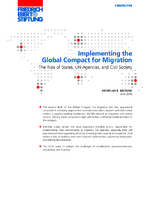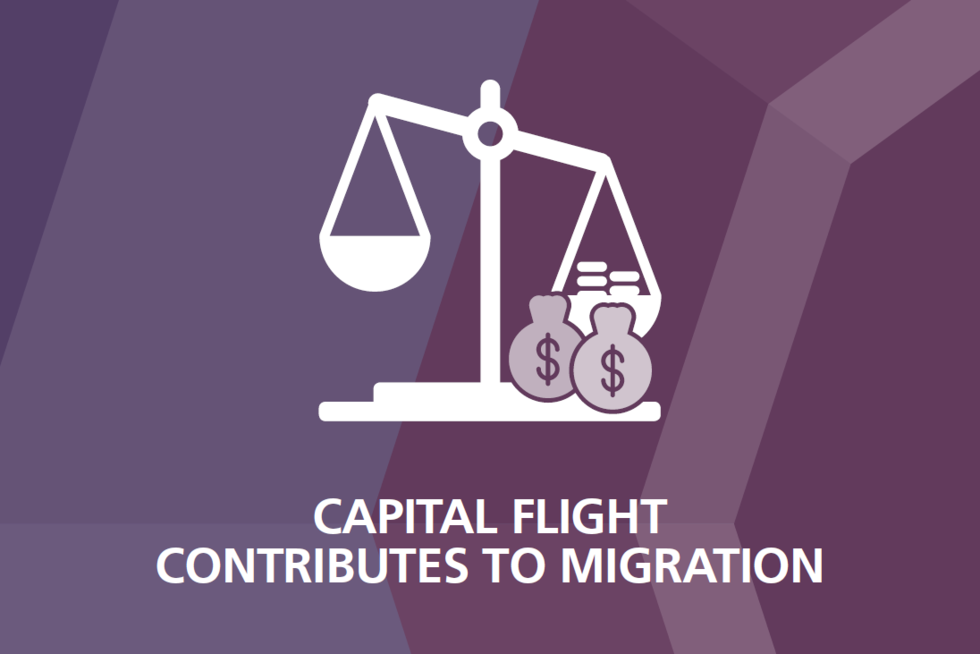For the GCM to live up to its potential, states should address the challenges of coordination, operationalization, monitoring, and funding.
The final round of negotiations in July 2018 for the Global Compact for save, orderly and regular Migration will be a critical moment for states to improve the lives of migrants around the world. Among the questions still unsettled is how the Global Compact for Migration (GCM) will be implemented. A few key elements of the implementation are known—like the capacity building mechanism, start-up fund, and the UN network on migration—but international cooperation on this scale comes with many challenges, particularly coordination, operationalization, monitoring, and funding. For the GCM to live up to its potential, the next round of negotiations should address the following four challenges head on.
Make coordination explicit, structured, and accountable
Implementation cannot be done without coordination, but the GCM is largely silent on who and how coordination will happen. Presumably, the International Organization for Migration (IOM) and the UN network on migration will be at the core but this structure should be clarified. The next draft should include the specific roles of all UN agencies in the new network and how they will interact, especially with other mechanisms in the Global Compact for Refugees. There are good models for interagency coordination (like the Inter-Agency Standing Committee’s humanitarian cluster approach). The new UN network on migration will need more structure and support than the previous Global Migration Group, and IOM’s leadership needs clear accountability and transparency.
Commit to a process of operationalization and action plans
The current draft of the GCM does not include a roadmap or timeline for implementation and has removed all mention of operationalization of indicators or guidelines. This is a mistake. For the GCM to have a real impact, all actors need to focus on how to turn their commitments into real actions. The first step is to commit to a process of operationalization with a roadmap, regional and national action plans, and working groups on migration indicators. This process could be developed slowly over the next four years as the GCM develops roots throughout the UN system, culminating in the first International Migration Review Forum (IMRF) in 2022. States need to develop a roadmap with a realistic and concrete timeline for implementation, and a set of indicators and milestones that will coordinate state actions.
The GCM reaffirms in broad terms the states’ commitments to migrants’ rights, but many of the battles will be over how these rights are to be realized, which indicators matter, and how/ who will do the measuring. The GCM needs to envision a process for this operationalization, whereby states, UN agencies, and civil society get into the weeds about policy indicators in working groups and consultations. For example, how will the Global Migration Group Principles and Guidelines be operationalized in the roadmap, action plans, and monitoring? In addition, there are other parts of the GCM that still need operationalization, like the structure of the capacity building mechanism. Will the mechanism be open to cities and local municipalities or civil society?
Finally, the GCM should make explicit the role of regional and national action plans. Action plans are key for operationalization because they make explicit the types of actions and actors doing the work and help marshal resources around the GCM’s objectives. Action plans also help eliminate overlap and can create accountability during follow-up. The capacity building mechanism should include a unit tasked with supporting countries to develop action plans.
Link monitoring migration indicators to human rights
The GCM establishes the International Migration Review Forum (IMRF) every four years as a place to “share progress on the implementation” but is unclear what indicators will be shared and what type of monitoring will occur in between forums. The final draft should include universal participation in meausuring migration indicators (like the one’s that would be agreed upon during the operationalization process) and link this reporting to the human rights of migrants. While states will be eager to share their progress on migration governance and border control, these monitoring and reporting mechanisms must accompany and complement reporting on violations of migrant human rights. In this respect, the GCM should strengthen the monitoring role of the Special Representative for International Migration and the Special Rapporteur on the Human Rights of Migrants. This could include coordinating and supporting national human rights institutions to produce regular “human rights of migrants” reports and partnering with unions and national labor inspectors to monitor safe work conditions for migrants in sectors like construction, agriculture, and domestic work. Finally, the GCM must create a strong mandate for the IMRF that includes human rights that is distinct from previous IOM forums.
Use funding to incentivize coordination, reform, and best practice
The final challenge in implementation is funding. The current draft of the GCM mentions only the start-up fund as seed funding for piloting projects. This misses an opportunity for the UN to leverage a global fund for migration to set priorities with match funding that rewards states that move quickly on commitments. Match funding can incentivize states and UN agencies to participate in coordination and to buy into UN reform. It also provides an opportunity to link funding to performance on migration governance indicators. With a large enough carrot, the UN could also make funding and participation in the capacity building mechanism contingent on rigorous monitoring and reporting on migrants’ rights. Who pays for a global migration fund is yet to be discussed, but there is big potential for setting global policy and incentivizing coordination.
The GCM is building the infrastructure of global governance of migration, but for the Compact to have a real impact it must be rigorously implemented. States should tackle the challenges of coordination, operationalization, monitoring, and funding in the final July negotiations. If all goes well, the next step after adopting the GCM in December 2018 will be to get to work.
Author:
Nicholas R. Micinski is a Ph. D. candidate in Political Science at the Graduate Center, City University of New York (CUNY), and research associate at the EU Studies Center and the Ralph Bunche Institute for International Studies.




